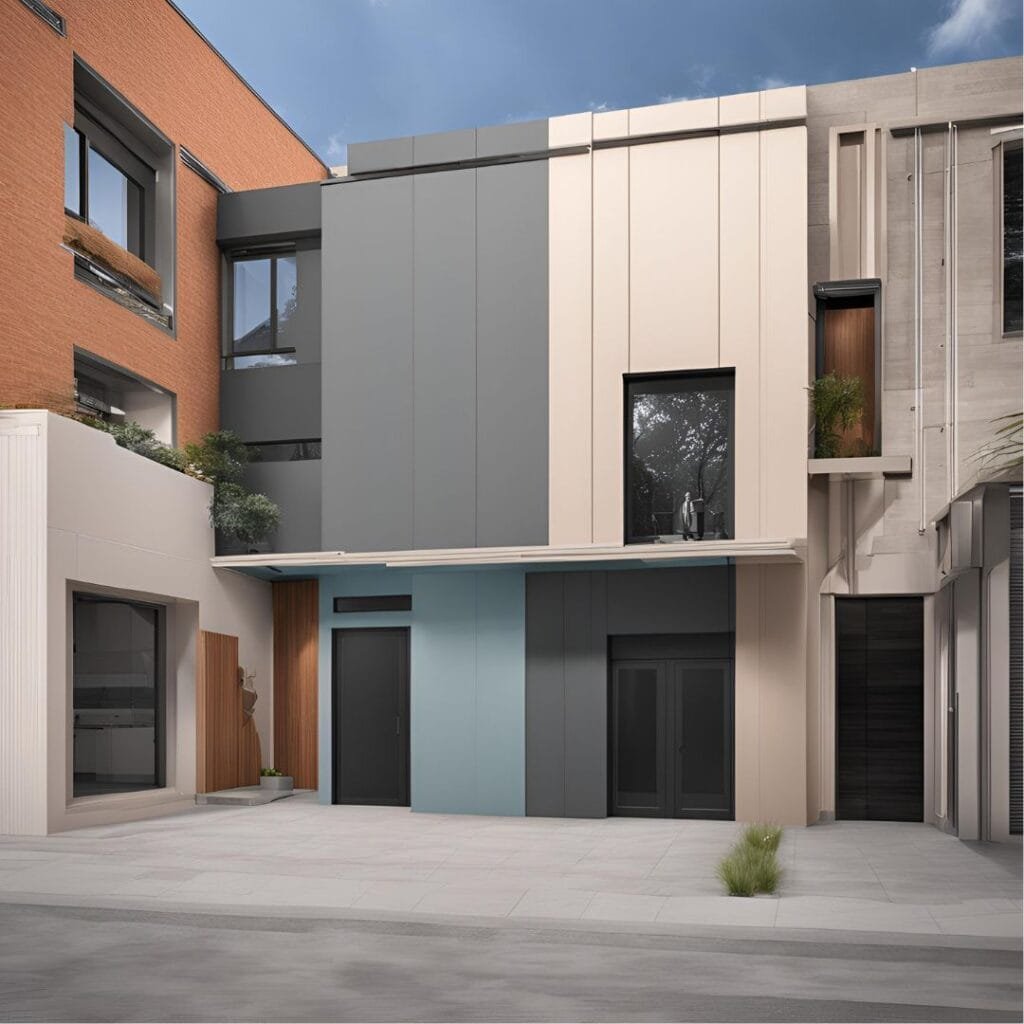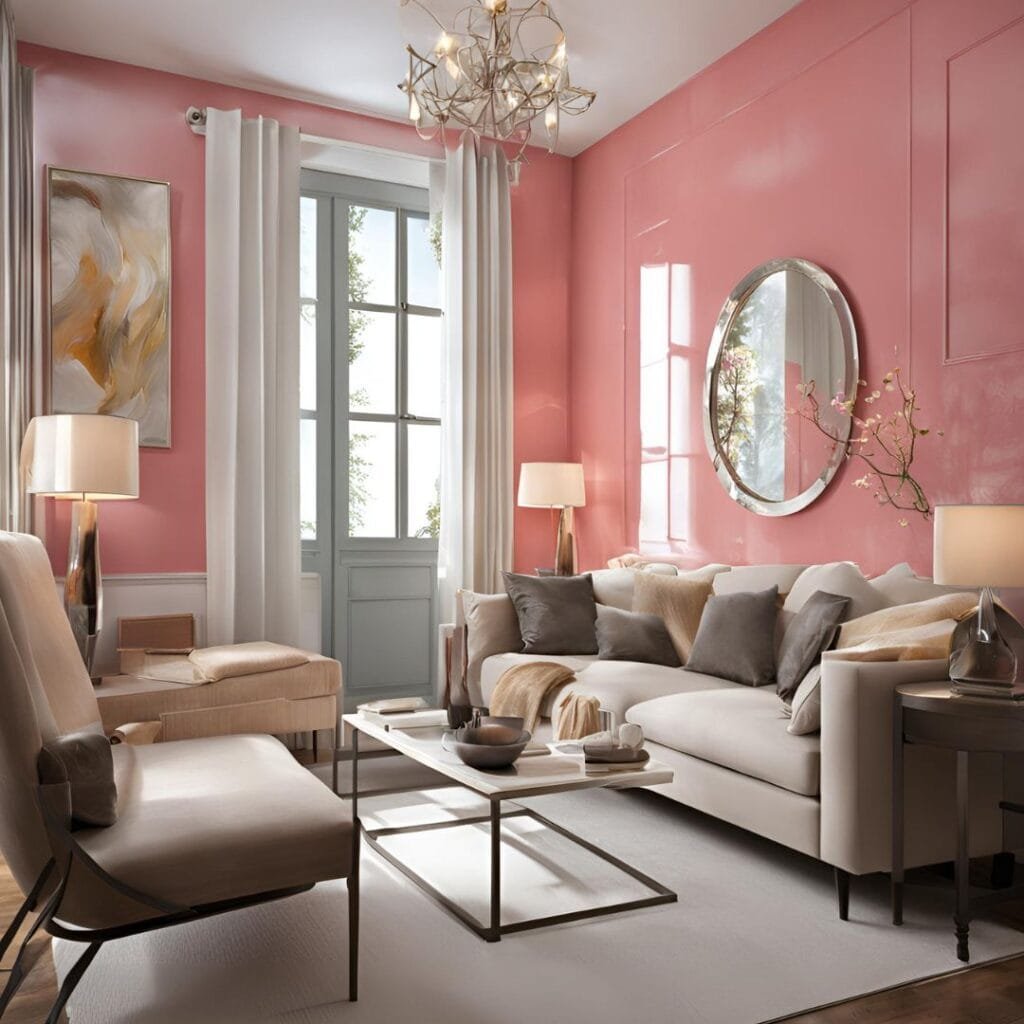Choosing the right paint finish can make a significant difference in the look and feel of your home. Whether you’re refreshing your living room, updating your kitchen, or giving your bedroom a makeover, understanding the differences between matte, satin, and glossy finishes is crucial. This comprehensive guide will help you navigate the world of paint finishes, comparing matte vs satin, satin vs glossy, and everything in between, ensuring you make the best choice for your painting projects.
Understanding Paint Finishes

Before diving into the specifics of matte vs satin and other comparisons, it’s essential to understand what paint finish actually means. The finish, or sheen, of paint refers to how much light it reflects once it’s dry. This characteristic affects not only the appearance of the painted surface but also its durability and maintenance requirements.
The Spectrum of Paint Finishes
Paint finishes typically range from flat (matte) to high gloss, with several options in between:
- Flat/Matte
- Eggshell
- Satin
- Semi-Gloss
- High Gloss
Each of these finishes has its own unique properties, making them suitable for different applications throughout your home.
Matte Finish: The Subtle Beauty
Matte finish, also known as flat finish, is characterized by its lack of shine and ability to absorb light rather than reflect it. This finish has gained popularity in recent years for its sophisticated and modern look.
Advantages of Matte Finish
- Hides Surface Imperfections: The non-reflective nature of matte paint makes it excellent at concealing wall defects and uneven surfaces.
- Rich Color Depth: Matte finishes often provide a deeper, more saturated color appearance.
- Modern Aesthetic: Ideal for creating a contemporary, elegant look in living rooms and bedrooms.
- Low Glare: Perfect for reducing glare in rooms with lots of natural light.
Disadvantages of Matte Finish
- Less Durable: More prone to showing marks and scuffs compared to higher-sheen finishes.
- Harder to Clean: The porous surface can make it challenging to wipe clean without damaging the paint.
- Not Ideal for High-Moisture Areas: Less resistant to moisture, making it unsuitable for bathrooms or kitchens.
Satin Finish: The Versatile Choice
Satin finish sits comfortably between matte and glossy, offering a pearl-like sheen that adds a subtle glow to surfaces. It’s often described as having a velvety appearance.
Advantages of Satin Finish
- Balanced Appearance: Provides a soft, pearl-like sheen without being too shiny or too flat.
- Easier to Clean: More resistant to stains and easier to wipe down than matte finishes.
- Versatile: Suitable for a wide range of rooms and surfaces, from living areas to trim work.
- Durable: More resistant to wear and tear compared to matte finishes.
Disadvantages of Satin Finish
- Shows Application Flaws: The slight sheen can highlight imperfections in the paint application or wall surface.
- Not as Rich in Color: May not provide the same depth of color as matte finishes.
- Moderate Reflection: While not as reflective as glossy finishes, it may still create some glare in very bright rooms.
Glossy Finish: The Shine Champion

Glossy finishes, including semi-gloss and high gloss, offer the highest level of shine and light reflection. These finishes create a bright, polished look that can make colors appear more vibrant.
Advantages of Glossy Finish
- Highly Durable: The most resistant to wear, tear, and moisture.
- Easy to Clean: Smooth surface makes it simple to wipe away dirt and stains.
- Brightens Spaces: Reflects light, potentially making rooms appear larger and brighter.
- Ideal for Trim and Accents: Perfect for highlighting architectural features and creating contrast.
Disadvantages of Glossy Finish
- Highlights Imperfections: Very reflective nature means every bump and flaw in the surface will be noticeable.
- Can Be Overwhelming: Too much gloss can create an overly bright or clinical feel in large spaces.
- Requires Careful Application: Needs more skill to apply evenly without showing brush or roller marks.
Matte vs Satin: A Detailed Comparison
When it comes to choosing between matte and satin finishes, several factors come into play. Let’s break down the matte vs satin debate across various aspects:
Appearance
- Matte: Offers a flat, non-reflective surface that absorbs light, creating a soft, smooth look.
- Satin: Provides a subtle, pearl-like sheen that gently reflects light, adding depth to the color.
Durability
- Matte: Less durable and more prone to showing marks and scuffs.
- Satin: More resistant to wear and tear, making it suitable for higher-traffic areas.
Cleaning and Maintenance
- Matte: Can be challenging to clean without damaging the finish; often requires touch-ups.
- Satin: Easier to clean and maintain, withstanding regular wiping and washing better.
Color Richness
- Matte: Often provides a richer, more saturated color appearance.
- Satin: May slightly alter the perceived color due to its light-reflecting properties.
Best Uses
- Matte: Ideal for low-traffic areas like adult bedrooms, formal living rooms, and dining rooms.
- Satin: Versatile enough for most rooms, including family rooms, hallways, and children’s bedrooms.
Cost
- Matte: Generally less expensive than higher-sheen finishes.
- Satin: Slightly more expensive than matte but often considered a good value for its versatility.
Satin vs Glossy: Choosing the Right Sheen
The choice between satin and glossy finishes often comes down to the specific needs of the space and personal preference. Here’s how they compare:
Light Reflection
- Satin: Offers a soft, pearl-like glow that gently reflects light.
- Glossy: Provides high light reflection, creating a bright, shiny surface.
Durability and Cleaning
- Satin: Durable and easy to clean, suitable for most household areas.
- Glossy: The most durable and easiest to clean, ideal for high-traffic or moisture-prone areas.
Highlighting Features vs Flaws
- Satin: Can hide minor imperfections while still adding some visual interest.
- Glossy: Highlights both architectural features and surface flaws due to high reflectivity.
Room Suitability
- Satin: Versatile enough for most rooms, from living areas to bedrooms.
- Glossy: Best for kitchens, bathrooms, trim, and accent walls.
Visual Impact
- Satin: Creates a balanced, sophisticated look without being too dramatic.
- Glossy: Makes a bold statement, adding drama and vibrancy to spaces.
Choosing the Right Finish for Each Room
Selecting the appropriate paint finish for different areas of your home can enhance both aesthetics and functionality. Here’s a room-by-room guide to help you choose:
Living Room
- Best Choice: Matte or Satin
- Why: Living rooms benefit from the sophisticated look of matte or the versatile durability of satin, depending on usage and lighting.
Kitchen
- Best Choice: Satin or Semi-Gloss
- Why: These finishes stand up well to moisture and frequent cleaning, essential in a kitchen environment.
Bathroom
- Best Choice: Semi-Gloss or High Gloss
- Why: High moisture resistance and easy cleaning make glossier finishes ideal for bathrooms.
Bedroom
- Best Choice: Matte or Satin
- Why: Matte creates a serene atmosphere, while satin offers a bit more durability for kids’ rooms.
Hallways and High-Traffic Areas
- Best Choice: Satin
- Why: Balances durability with aesthetic appeal, standing up to wear and tear while maintaining a pleasing look.
Trim and Moldings
- Best Choice: Semi-Gloss or High Gloss
- Why: Highlights architectural features and contrasts beautifully with wall colors.
Application Tips for Different Finishes
Achieving a flawless finish requires proper application techniques. Here are some tips for each type of finish:
Matte Finish Application
- Use high-quality rollers or brushes to ensure even coverage.
- Apply in thin, even coats to avoid visible roller marks.
- Be prepared for touch-ups, as matte finishes can show wear more easily.
Satin Finish Application
- Maintain a wet edge to avoid lap marks.
- Use a high-quality angled brush for cutting in around trim and corners.
- Sand between coats for an ultra-smooth finish.
Glossy Finish Application
- Prepare surfaces meticulously, as imperfections will be highly visible.
- Use a foam roller or sprayer for the smoothest application.
- Apply multiple thin coats rather than one thick coat for best results.
Environmental and Health Considerations
When choosing paint finishes, it’s important to consider environmental and health factors:
VOC Content
- Matte finishes often have lower VOC (Volatile Organic Compound) content.
- Look for low-VOC or zero-VOC options in all finishes for better indoor air quality.
Eco-Friendly Options
- Many manufacturers now offer eco-friendly paint options in various finishes.
- Consider paints made from natural or recycled materials for a more sustainable choice.
Allergies and Sensitivities
- Some people may be more sensitive to the chemicals in glossier finishes.
- Matte finishes might be a better choice for those with allergies or chemical sensitivities.
Trends in Paint Finishes
Certain trends in paint finishes are emerging:
- Mixed Finishes: Combining different sheens in the same room for visual interest.
- Matte Resurgence: A continued preference for matte finishes in modern and minimalist designs.
- Satin for Whole-Home Use: Increasing popularity of satin finish as a versatile option for entire homes.
- Textured Finishes: Growing interest in paints that offer subtle texture along with sheen.
- Eco-Conscious Choices: Greater demand for environmentally friendly paint options across all finishes.
Maintenance and Longevity
The longevity of your paint job depends not only on the finish chosen but also on proper maintenance:
Matte Finish Maintenance
- Dust regularly with a soft, dry cloth.
- Avoid scrubbing or using harsh cleaners.
- Touch up marks and scuffs as needed.
Satin Finish Maintenance
- Clean with a soft, damp cloth and mild soap when necessary.
- Rinse thoroughly to avoid leaving soap residue.
- Periodic dusting helps maintain the finish.
Glossy Finish Maintenance
- Wipe down regularly with a damp cloth to maintain shine.
- Use non-abrasive cleaners for tougher stains.
- Buff with a soft, dry cloth after cleaning to restore luster.
Cost Considerations
While the cost difference between finishes may seem minimal per gallon, it can add up in larger projects:
- Matte finishes are generally the most affordable.
- Satin finishes are mid-range in price.
- Glossy finishes, especially high-gloss, tend to be the most expensive.
Consider not just the initial cost but also the long-term value. Higher-sheen finishes may cost more upfront but can offer better durability and easier maintenance, potentially saving money over time.
Professional vs DIY Application
The choice between hiring a professional painter and doing it yourself can depend on the finish you choose:
DIY-Friendly Finishes
- Matte and eggshell finishes are more forgiving for DIY applications.
- Satin can be DIY-friendly with proper preparation and technique.
Professional Recommendation
- Semi-gloss and high-gloss finishes often benefit from professional application.
- Consider professional help for large areas or when using darker colors in any finish.
Conclusion: Making Your Final Decision
Choosing between matte vs satin, satin vs glossy, or any other finish combination ultimately comes down to balancing aesthetics, functionality, and maintenance needs. Consider the specific requirements of each room, your personal style preferences, and the long-term implications of your choice.
Remember:
- Matte finishes offer sophistication and hide imperfections but require more careful maintenance.
- Satin finishes provide a versatile middle ground, suitable for most areas of the home.
- Glossy finishes offer durability and easy cleaning but can highlight flaws and may be too shiny for some spaces.
By carefully weighing these factors and considering the insights provided in this guide, you can confidently choose the best paint finish for each area of your home, ensuring a beautiful and lasting result for your painting projects.
